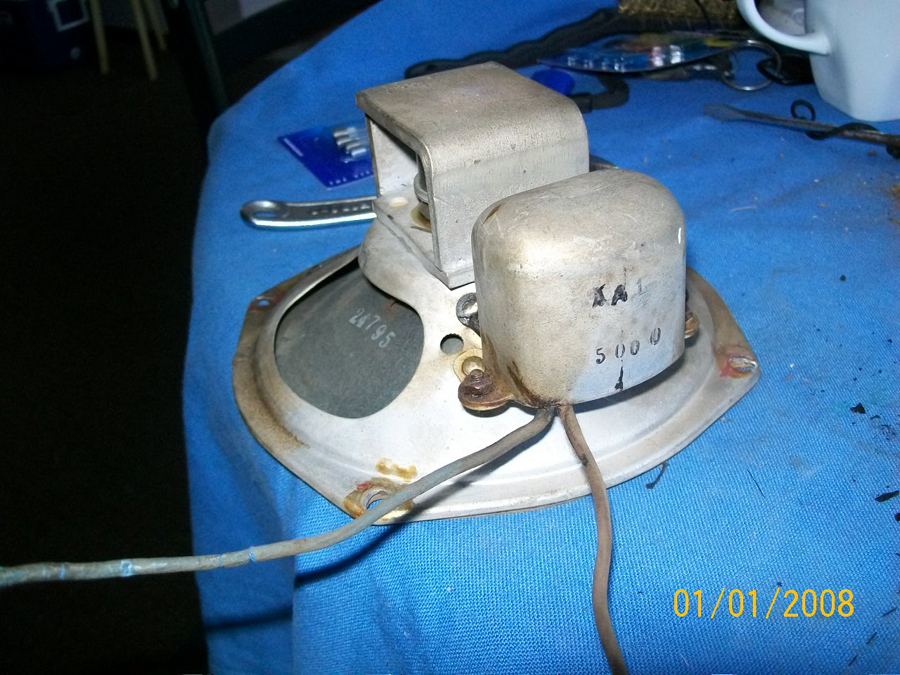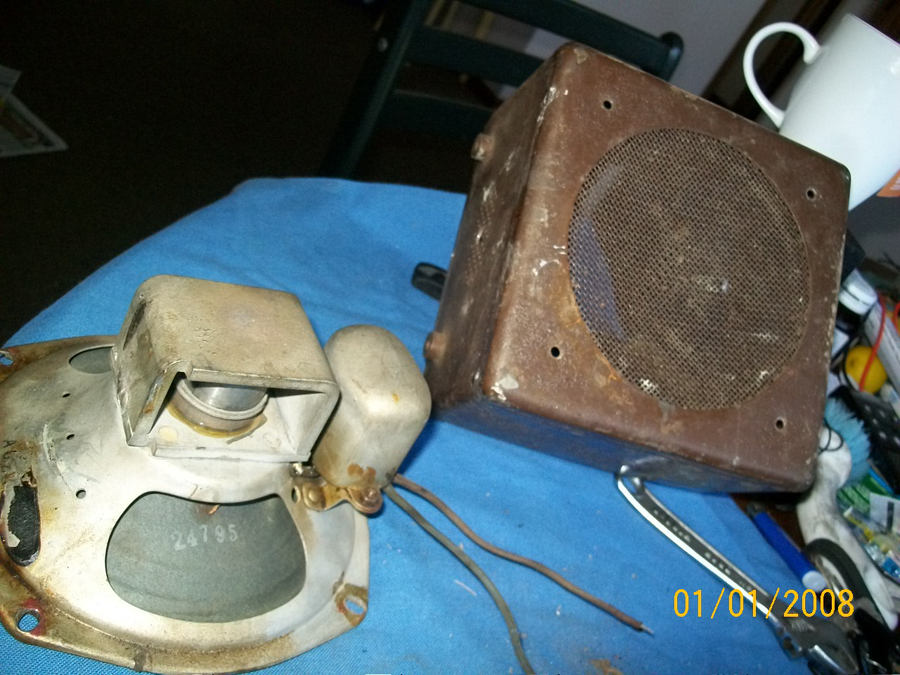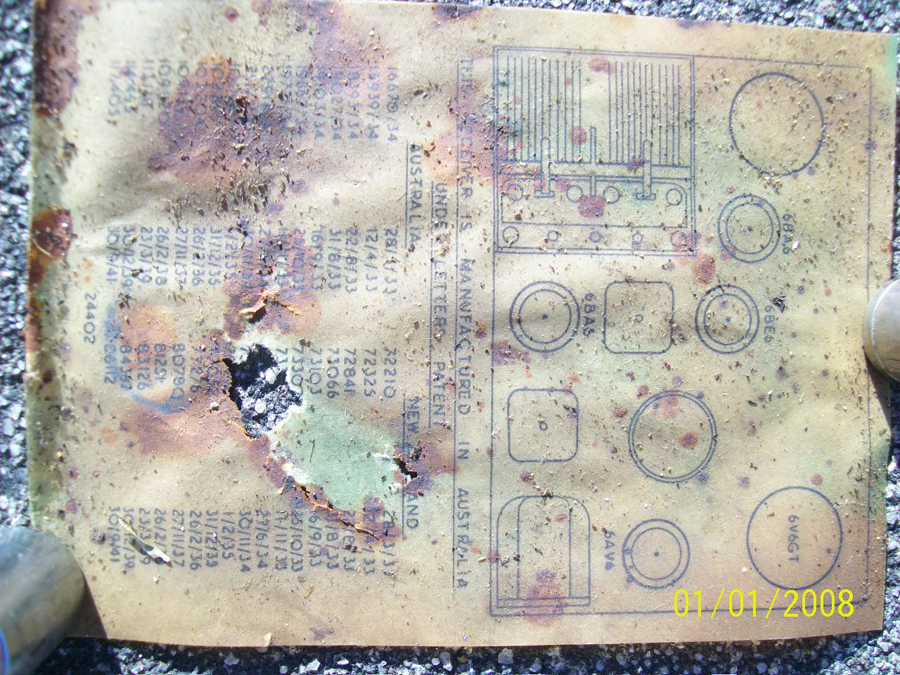Tech Talk
Forum home - Go back to Tech talk
|
AWA car radio
|
|
|
Return to top of page · Post #: 16 · Written at 4:55:39 PM on 8 June 2018.
|
|
|
|
Location: Belrose, NSW
Member since 31 December 2015 Member #: 1844 Postcount: 2637 |
|
What you are referring to as the "main" valve is the rectifier for the 200 volts approx B+ voltage. |
|
|
Return to top of page · Post #: 17 · Written at 7:09:32 PM on 8 June 2018.
|
|
|
|
Location: Sale, VIC
Member since 20 October 2016 Member #: 1990 Postcount: 62 |
|
Hi IR    |
|
|
Return to top of page · Post #: 18 · Written at 10:25:04 PM on 8 June 2018.
|
|
|
|
Location: Belrose, NSW
Member since 31 December 2015 Member #: 1844 Postcount: 2637 |
|
OK. Trace the wires that come from pins 3 and 4 of the 6V6. They will end up on the primary of the speaker transformer. |
|
|
Return to top of page · Post #: 19 · Written at 7:55:55 AM on 9 June 2018.
|
|
|
|
Location: Sale, VIC
Member since 20 October 2016 Member #: 1990 Postcount: 62 |
|
Thanks IR |
|
|
Return to top of page · Post #: 20 · Written at 9:46:18 AM on 9 June 2018.
|
|
|
|
Location: Sale, VIC
Member since 20 October 2016 Member #: 1990 Postcount: 62 |
|
Marcc wrote: |
|
|
Return to top of page · Post #: 21 · Written at 10:06:55 AM on 9 June 2018.
|
|
|
|
Location: Melbourne, VIC
Member since 20 September 2011 Member #: 1009 Postcount: 1251 |
|
One question that hasn't been asked - is this radio 6 or 12 volt? |
|
|
Return to top of page · Post #: 22 · Written at 1:44:18 PM on 9 June 2018.
|
|
|
|
Location: Wangaratta, VIC
Member since 21 February 2009 Member #: 438 Postcount: 5602 |
|
What you have in this are two separate entities. The radio part & the power supply part. The power supply is of the vibrator type & this all belongs on the primary side of the transformer that provides the HV for the "B" voltage applied to the valves. |
|
|
Return to top of page · Post #: 23 · Written at 5:14:07 PM on 9 June 2018.
|
|
|
|
Location: Sale, VIC
Member since 20 October 2016 Member #: 1990 Postcount: 62 |
|
MTV |
|
|
Return to top of page · Post #: 24 · Written at 5:24:54 PM on 9 June 2018.
|
|
|
|
Location: Sale, VIC
Member since 20 October 2016 Member #: 1990 Postcount: 62 |
|
Confirmed: the transformer in the amp is stamped 12V. |
|
|
Return to top of page · Post #: 25 · Written at 1:30:07 AM on 10 June 2018.
|
|
|
|
Location: Wangaratta, VIC
Member since 21 February 2009 Member #: 438 Postcount: 5602 |
|
We have thrown ourselves in the "deep end" haven't we........... |
|
|
Return to top of page · Post #: 26 · Written at 9:58:04 AM on 10 June 2018.
|
|
|
|
Location: Sale, VIC
Member since 20 October 2016 Member #: 1990 Postcount: 62 |
|
Hehe |
|
|
Return to top of page · Post #: 27 · Written at 11:31:59 AM on 10 June 2018.
|
|
|
|
Location: Melbourne, VIC
Member since 20 September 2011 Member #: 1009 Postcount: 1251 |
|
If it is 12 volt it will be either a 904A or 906A. The differences between the two is that the 906A doesn't have a tone control. |
|
|
Return to top of page · Post #: 28 · Written at 6:37:49 PM on 10 June 2018.
|
|
|
|
Location: Sale, VIC
Member since 20 October 2016 Member #: 1990 Postcount: 62 |
|
I have now MTV. |
|
|
Return to top of page · Post #: 29 · Written at 1:15:11 PM on 11 June 2018.
|
|
|
|
Location: Sale, VIC
Member since 20 October 2016 Member #: 1990 Postcount: 62 |
|
On the booster |
|
|
Return to top of page · Post #: 30 · Written at 4:57:12 PM on 15 June 2018.
|
|
|
|
Location: Sale, VIC
Member since 20 October 2016 Member #: 1990 Postcount: 62 |
|
Hey folks |
|
|
You need to be a member to post comments on this forum.
|
|

Sign In

Vintage Radio and Television is proudly brought to you by an era where things were built with pride and made to last.
DISCLAIMER: Valve radios and televisions contain voltages that can deliver lethal shocks. You should not attempt to work on a valve radio or other electrical appliances unless you know exactly what you are doing and have gained some experience with electronics and working around high voltages. The owner, administrators and staff of Vintage Radio & Television will accept no liability for any damage, injury or loss of life that comes as a result of your use or mis-use of information on this website. Please read our Safety Warning before using this website.
WARNING: Under no circumstances should you ever apply power to a vintage radio, television or other electrical appliance you have acquired without first having it checked and serviced by an experienced person. Also, at no time should any appliance be connected to an electricity supply if the power cord is damaged. If in doubt, do not apply power.
Shintara - Keepin' It Real · VileSilencer - Maintain The Rage
